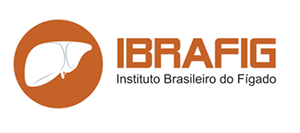Guilherme Grossi Lopes Cançado · Michelle Harriz Braga · Maria Lucia Gomes Ferraz · Cristiane Alves Villela‑Nogueira · Debora Raquel Benedita Terrabuio · Eduardo Luiz Rachid Cançado · Mateus Jorge Nardelli · Luciana Costa Faria · Nathalia Mota de Faria Gomes · Elze Maria Gomes Oliveira · Vivian Rotman · Maria Beatriz Oliveira · Simone Muniz Carvalho Fernandes da Cunha · Marlone Cunha‑Silva · Liliana Sampaio Costa Mendes · Claudia Alexandra Pontes Ivantes · Liana Codes · Valéria Ferreira de Almeida e Borges · Fabio Heleno de Lima Pace15 · Mario Guimarães Pessoa · Izabelle Venturini Signorelli · Gabriela Perdomo Coral · Paulo Lisboa Bittencourt · Cynthia Levy · Cláudia Alves Couto · Members of the Brazilian Cholestasis Study Group Consortium
Abstract
Background Primary biliary cholangitis (PBC) is a chronic cholestatic liver disease in which anti-mitochondrial antibodies
(AMA) are the diagnostic hallmark. Whether AMA-negative PBC patients represent a different phenotype of disease is
highly debated.
Aims
The purpose of our study was to compare AMA-positive and AMA-negative PBC patients in a large non-white admixed
Brazilian cohort.
Methods
The Brazilian Cholestasis Study Group multicentre database was reviewed to assess demographics, clinical features
and treatment outcomes of Brazilian PBC patients, stratifying data according to AMA status.
Results
A total of 464 subjects (95.4% females, mean age 56 ± 5 years) with PBC were included. Three hundred and eightyfour
(83%) subjects were AMA-positive, whereas 80 (17%) had AMA-negative PBC. Subjects with AMA-negative PBC
were significantly younger (52.2 ± 14 vs. 59.6 ± 11 years, p = 0.001) and had their first symptom at an earlier age (43.2 ± 13
vs. 49.5 ± 12 years, p = 0.005). Frequency of type 2 diabetes was significantly increased in subjects with AMA-negative
PBC (22.5% vs. 12.2%, p = 0.03). Lower IgM (272.2 ± 183 vs. 383.2 ± 378 mg/dL, p = 0.01) and triglycerides (107.6 ± 59.8
vs.129.3 ± 75.7 mg/dL, p = 0.025) and higher bilirubin (3.8 ± 13.5 vs. 1.8 ± 3.4 mg/dL, p = 0.02) levels were also observed
in this subgroup. Response to ursodeoxycholic acid varied from 40.5 to 63.3% in AMA-positive and 34 to 62.3% in AMAnegative individuals, according to different response criteria. Outcomes such as development of liver-related complications, death and requirement for liver transplantation were similar in both groups.
Conclusions AMA-negative PBC patients are similar to their AMA-positive counterparts with subtle differences observed
in clinical and laboratory features.
Comments are closed.





